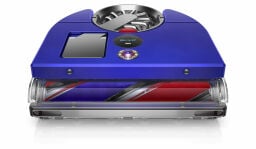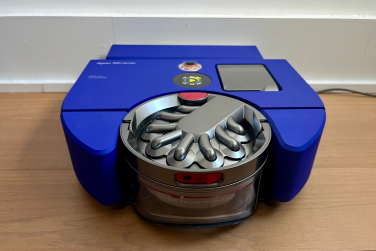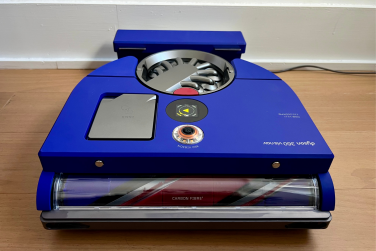Dyson’s first robot vacuum in years is officially out — here are our initial thoughts

TL;DR: On March 12, Dyson released the 360 Vis Nav, its first robot vacuum entry in the U.S. since 2016. The 360 Vis Nav already (temporarily) sold out at Dyson’s website, Amazon, and Best Buy despite its steep price tag of $ 1,199.99.

Dyson’s new robot vacuum, the 360 Vis Nav, officially became available to purchase on March 12. The casual $ 1,199.99 asking price is more expensive than that of Dyson’s most expensive cordless vacuum, but that didn’t stop the 360 Vis Nav from selling out at Dyson’s website, Amazon, and Best Buy within the first few weeks of being available.
So, what’s all the commotion about the 360 Vis Nav?
Completing the trifecta of new Dyson vacuums that were first announced in September 2024, the 360 Vis Nav is the final and arguably most highly anticipated drop for several reasons. Being the only new release of the three that’s not just another cordless vacuum, the 360 Vis Nav is inherently a standout. This is Dyson’s first stab at the U.S. robot vacuum market since 2016, when the flop that was the Dyson 360 Eye came out.
The 360 Vis Nav’s design is a complete overhaul of the eight-year-old 360 Eye (and it needed to be). Don’t get us wrong, it still screams “Dyson” upon first glance: the full bright indigo exterior and exposed industrial dust bin would be anyone’s first clue. Whether or not you’ll want this maximalist monstrosity sitting out in the open in your home is up to you.


The 360 Vis Nav is D-shaped instead of round (a shape that iRobot tried once with the Roomba s9+, but has since given up on), with the vacuum’s edges featuring a groundbreaking feature: an extending side duct that redirects suction power to the corner of the vacuum to suck debris hiding against the wall. This looks to solve the long-standing blind spot of round robot vacuums, which skirt as close to the wall as they can and hope that their flimsy side brushes happen to push a dust bunny into the cleaning path.
Cleaning gets even more detailed through heat map-like detection of areas with the highest amount of dust, where the 360 Vis Nav will automatically increase its suction power. It would have been cool if Dyson extended our beloved green laser capabilities to its robot vacuum, to give the humans in the house some visible proof of the 360 Vis Nav’s suction — but any dust detection feature is appreciated nonetheless.
These suction-centric features, in tandem with Dyson’s Hyperdymium motor that spins at up 110,000 RPM (faster than several mid-range cordless Dyson vacuums) create what Dyson says is double the suction power of any competing robot vacuum. (In Boost mode, at least — the 360 Vis Nav has four suction modes total).
Surprisingly, the 360 Vis Nav’s advanced cleaning features end there. Though the 360 Vis Nav has smart mapping, Dyson didn’t even bother to dabble with mopping, small obstacle detection, or self-emptying. As one of the most expensive robot vacuums on the market, skipping all of those integral premium features was… bold.
We’re putting the 360 Vis Nav to the test as we speak, comparing its cleaning performance and navigational abilities to similarly-priced robot vacuums like the Roomba Combo j9+ and Narwal Freo X Ultra. Our official review is coming soon as we wait for a restock at Dyson’s website, Amazon, and Best Buy. For now, there’s no need for FOMO — we’re not sure whether the 360 Vis Nav is worth its steep price tag yet.

